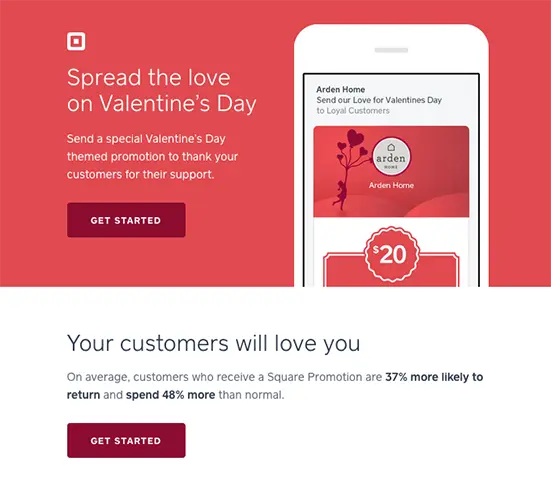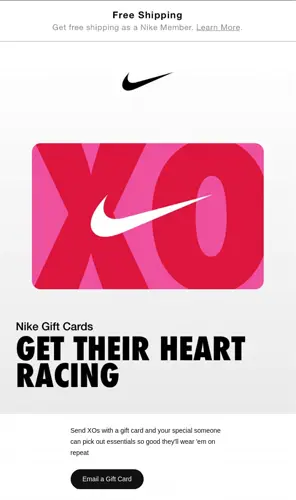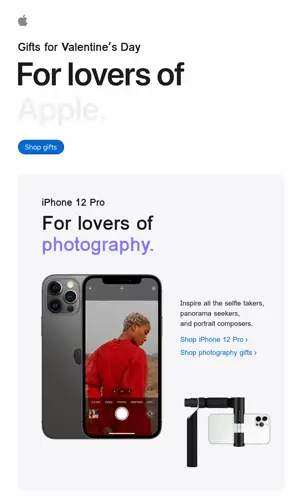“A couple of hearts, a red colour palette, that’s all we need for a Valentine’s email!” Would you put so little effort into romancing a real-life love interest?
Here are a bunch of Valentine’s emails that show how a little extra thought can stand out from the crowd and really get your readers’ attention.
Jenki – “A love letter to matcha”
Why it works
A love letter to your product is a great way to talk about the benefits your customers get. You’re also flipping the script by speaking as a customer, rather than addressing them. Your audience should be able to recognise themselves in the picture you paint.
How to do it
Dig into your customer reviews! Find the positive things real users have said, and use the most common to focus your product love letter on. If you can reference previous experiences with competitors, as Jenki does with coffee, even better.
Nike – Word play
Why it works
Just as love is only one association among many for the colour red, the English language offers plenty of opportunity for puns and other word play. When 2 different experiences have the same impact, in this case an elevated heart rate, you’ve got a headline ready made for you.
How to do it
This is a step up from the benefits of the love letter example; how does your product make your audience feel? A piece of accounting software might make a business owner feel calmer as the month ends and they can see their books balance. A new watch might make you feel sophisticated. A family holiday might make parents feel grateful. Whatever you sell, there’s an emotional benefit you can tap into.
Square – Share the love

Why it works
Let’s be honest, for some products it’s hard to bring love into the room, with business software being a prime example (apart from us, right? Right…?)
Square gets around this by focusing on how they can help their customers take advantage of Valentine’s Day. You might call this a second-order benefit.
How to do it
This is primarily one for the B2B sector, although if you’re selling something to consumers that they will share in some way then it might work for you. For example, if you sell barbeques, you could write about how the buyer’s family will enjoy the food they will cook on it.
The Jobs to be done framework is useful here; you need to explore what end goal your customer is looking to achieve. The classic example is someone visiting a DIY store and browsing drills:
- They want to buy a drill
- So that they can make a hole in their wall
- So that they can hang up a picture
- So that dinner party guests will talk about the picture
- So that people will say they are cultured and know about art
- So that dinner party guests will talk about the picture
- So that they can hang up a picture
- So that they can make a hole in their wall
In other words, what comes next after your product has delivered its primary benefit?
Apple – another kind of love
Why it works
Romantic love might be the main association people have with Valentine’s Day, but there’s no need to restrict yourself this way.
Connecting to what your audience cares about also allows you to sidestep the clichés for which Valentine’s campaigns are often famous.
How to do it
This kind of campaign is a great idea if you have trouble stepping back from the details of your product to see the bigger picture. For example, here at Spotler we might use “for lovers of clearer communication.” Our intelligent website personalisation, drag-and-drop email editor, and easy-to-use CRM all share the aim of helping marketers be clearer about the value they can offer their clients.
Go and spread the love!
How will you stand out this Valentine’s Day? Whichever route you choose, we’d love to help you! Get in touch to see how Spotler can help you to make Valentine’s Day a success.




